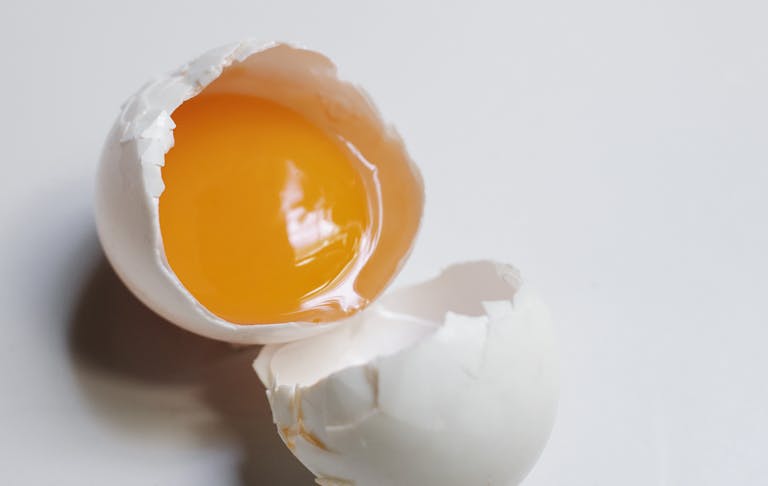What To Feed Chickens In Summer
As the summer sets in, your chickens’ feeding needs will begin to shift. The warmer weather affects how much they eat, what they need to stay healthy and how you manage their daily feed. In this guide, we’ll look at how to adjust your flock’s diet in the hotter months to keep them laying, hydrated and comfortable.
Lighter appetites in hot weather
Chickens tend to eat less in summer. This is perfectly normal. Like us, they don’t feel like heavy meals when it’s hot, and they’ll often reduce their intake naturally. You might notice half-full feeders or slower eating in the morning and evening when it’s cooler.
That doesn’t mean your hens are missing out, but it does mean their diet needs to be nutrient-dense to compensate for the lower volume. Personally, I prefer to feed layers pellets as the main source of nutrition year-round, and this is especially important in summer when chickens are picking at their food more lightly. Avoid cutting back on their main feed just because they seem less interested – they still need that complete balance of protein, vitamins and minerals.
Keep treats cool and occasional
Summer is not the best time to offer starchy or heat-producing extras like mixed corn or grains. These generate body heat during digestion, which your chickens don’t need in hot weather. If you do offer any treats, stick to water-rich foods like cucumber or melon, and only in small amounts.
Personally, I offer these sparingly and usually later in the day when the temperature has dropped. Anything perishable should be cleared away quickly to avoid attracting flies or going off in the sun.
If you’d like ideas for healthy treats for hens, check out our post about some homemade ideas.
Focus on hydration
Water is the most important part of summer feeding. Chickens need constant access to cool, fresh water to stay hydrated and regulate their body temperature.
In hot weather, I always add extra drinkers to the run and place them in shaded areas. I also check them throughout the day, especially during heatwaves. Chickens won’t drink warm or dirty water, so it’s better to tip out and refill rather than top up. In very hot spells, I’ve found that dropping a few ice cubes into the drinker can help keep things cooler for longer; however, these must not come from your kitchen freezer due to the risk of cross-contamination. It’s actually forbidden by DEFRA to do so..
Feeding chickens during a heatwave
Heatwaves are becoming more common in the UK, and chickens can struggle in extreme temperatures. When it’s unusually hot, you’ll likely notice a drop in appetite. That’s normal – your birds are trying to regulate their body temperature. The best thing you can do is keep their diet simple and consistent.
Stick to layers pellets as their main feed and avoid offering extras altogether until the weather gets cooler. Even fruit and veg can spoil quickly in high heat and create hygiene issues. What really matters is cool water – lots of it, refreshed often. In my setup, I place multiple drinkers in shaded corners and check them several times a day.
If your hens seem particularly stressed, which can happen above 29°C, poultry-safe electrolyte powders can be added to their water for short-term support. Just follow the instructions and remove them after a few days. Alternatively, a little bit of banana can help as these are a natural source of electrolytes. Otherwise, avoid making any changes to their diet while the heat persists; familiar food and cool water are what will keep them safest.
Timing matters
Feed your chickens early in the morning and again in the evening, when it’s cooler. These are the times they’ll be most active and most likely to eat well. During the day, they’ll naturally seek shade and reduce activity, so don’t be surprised if they ignore food during the hottest hours.
I tend to check and top up feeders first thing, then again before lock-up. Midday, I just focus on water and shade.
If there is no natural shade near your run, then it’s important to provide some, even if it’s just covering the top of the run with an old blanket or leaning a bit of cardboard next to the netting to keep the sun off. Keeping the food and water under shade is also helpful, especially the water, to keep it cool.
Adjusting for free-range flocks
If your hens free-range in summer, they’ll often pick up insects, green plants and fallen fruit while foraging. This is great enrichment and adds variety, but it doesn’t replace their main feed.
Even if they’re scratching around all day, I still provide a measured amount of layers pellets every evening. That way, they can top up before roosting and you know they’re getting the protein and calcium they need for laying.
Final thoughts
Feeding chickens in summer doesn’t mean overhauling their diet – it just means paying attention. Keep their feed consistent, prioritise hydration, and avoid anything that could cause stress or spoilage. When in doubt, clean water and complete layers pellets will see them through even the hottest days.
Disclosure: This post may contain affiliate links. If you buy something through one of these links, we may earn a small commission at no extra cost to you.
Kevin O’Hara got his first chickens back in 1972. A backyard chicken keeper based in Yorkshire, he created of KeepingChickens.uk back in 2012. With years of hands-on experience, he shares practical, UK-specific advice to help others care for happy, healthy hens. Learn more about Kevin on the author page.






